This unassuming server has become a favorite in the STH lab. The Supermicro SYS-111C-NR is a 1U server that is different from most Intel Xeon servers we have seen previously. That is because it is a single-socket 4th gen Intel Xeon Scalable server. With this new generation, Intel has the I/O to make a solid single-socket solution, and Supermicro did an awesome job taking advantage of that with the SYS-111C-NR. Let us get to the review.
Supermicro SYS-111C-NR External Hardware Overview
At only 597mm or 23.5″ deep, the SYS-11C-NR is 7-10″ shallower than many dual-socket servers we have reviewed recently. That means it fits in many data centers. The front of the system is only a 10x 2.5″ bay design. That is not as dense as some of the 12x 2.5″ designs we have seen recently, but it allows the system to have additional features including front panel USB ports and power buttons instead of having to mount those on rack ears.
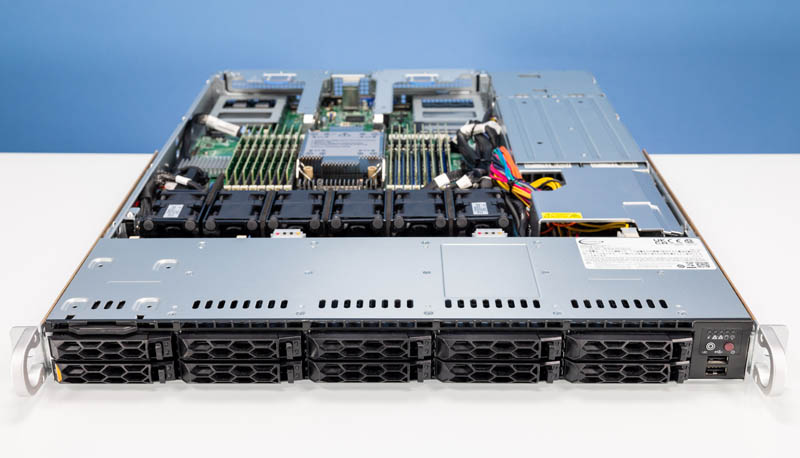
The other benefit is the ability to use tool-less drive trays. The 2.5″ drive bays are SATA but can also be NVMe. We have a NVMe configuration in ours. These NVMe bays can operate at up to PCIe Gen5 speeds for when those drives become more widely available.
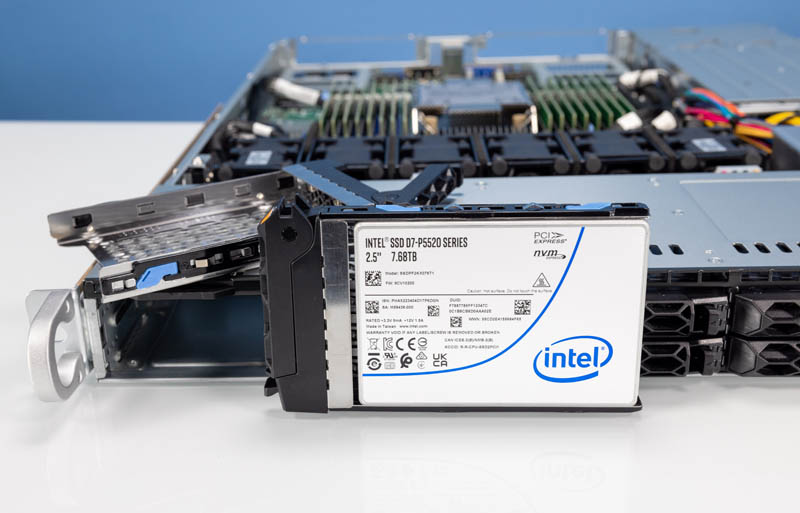
The rear of the system is a bit different. Starting with the center I/O we have the management NIC port, two USB ports, and on either side the VGA and serial port. This is a much more symmetrical design than many of Supermicro’s other motherboard designs. Symmetry does not stop there though.
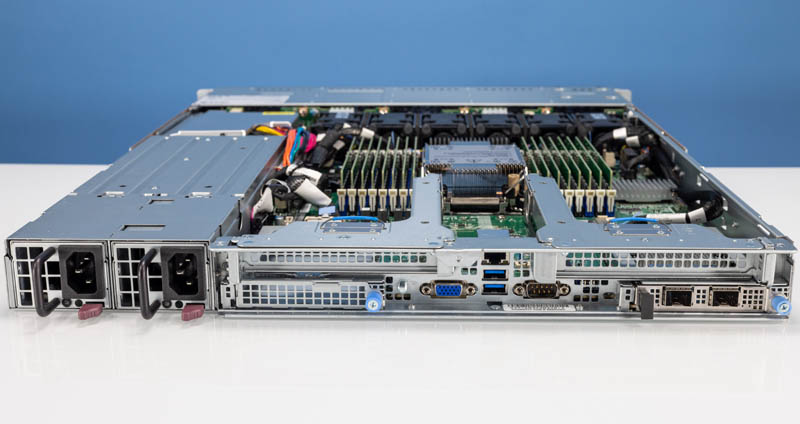
For the base networking, there are no NIC ports other than the management onboard. Instead, one uses two OCP NICs on either side of the rear I/O stack.
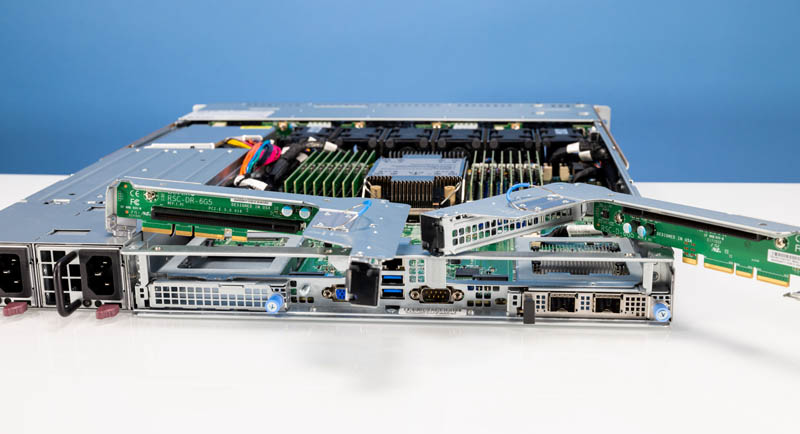
The risers on either side are PCIe Gen5 x16. These can now handle 400Gbps networking which is new in this generation. We have been using NVIDIA ConnectX-7 400G cards that PNY sent in this system for a 400Gbps networking piece we are going to have live in the next few days after this review.
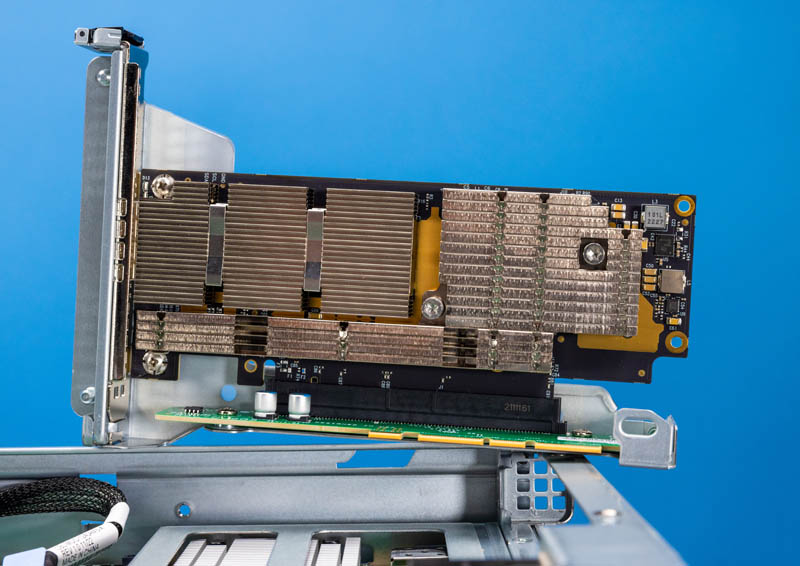
For some perspective, powering this NIC with a dual Intel Xeon E5-2600 V4 server would have used 80% of the older platforms PCIe lanes. Here, this is just one of two slots and does not include the OCP NIC slots or the front NVMe PCIe Gen5 connectivity. That is the power of the single socket solution.
Power is perhaps the least symmetrical part of this system with both PSUs on the left side instead of having one on either side as we see in some servers. Many data centers prefer to have PSUs on the same side and that is where this makes a lot of sense.
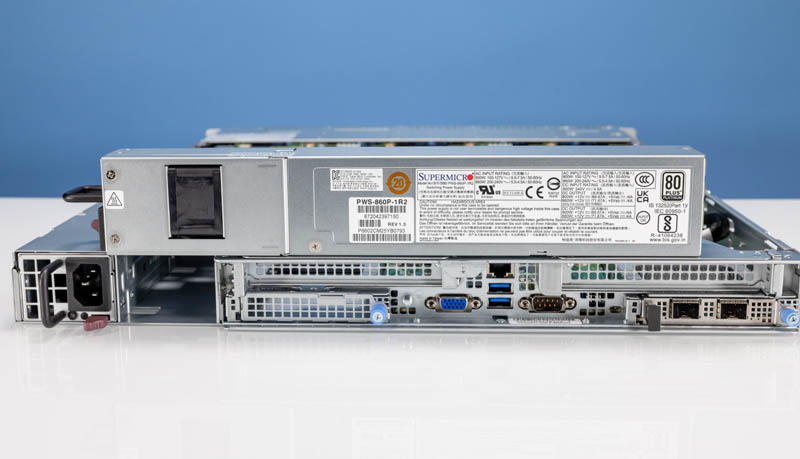
The redundant power supplies are 800W 80Plus Platinum units.
Next, let us get inside the system to see what makes this different from previous generations.

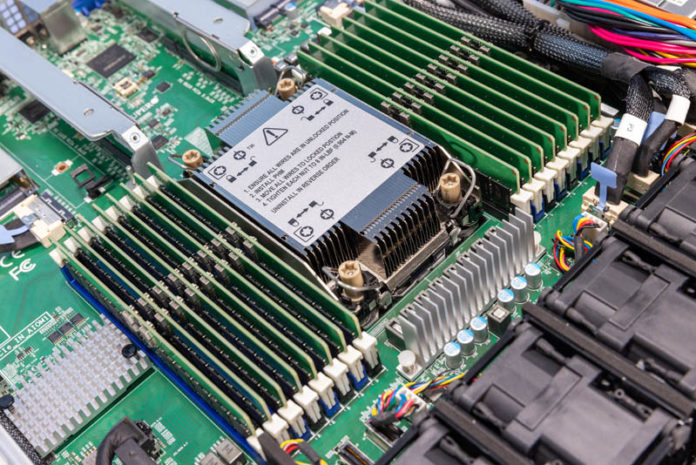



Sike. SuperMicro is a terrible brand who putd out shit products. Tldr: buy a real server.
You choosed a bad day to complain about Supermicro. Yesterday they jumped a 28% in Nasdaq.